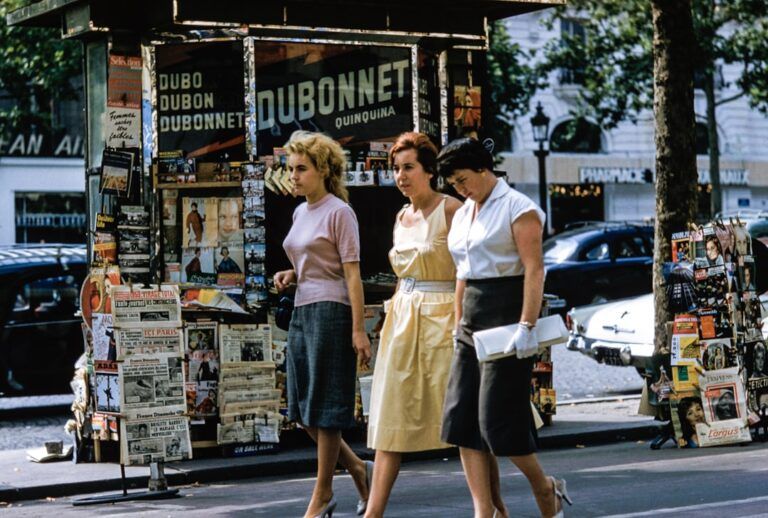Coffee thermoses have become an essential part of daily life for many people around the world. These insulated containers allow individuals to enjoy their favorite hot beverages on the go, keeping them warm for hours. The history of the coffee thermos dates back to the early 20th century, and since then, it has evolved and undergone numerous advancements in design and technology. In this article, we will explore the origins of the coffee thermos, its evolution over time, and its impact on society. We will also discuss the environmental benefits of using reusable thermoses over disposable coffee cups.
Key Takeaways
- Early attempts at insulated containers date back to the 19th century.
- The thermos evolved from glass to stainless steel in the early 1900s.
- World War II increased demand for coffee thermoses and led to advancements in production.
- Portable coffee thermoses for outdoor activities emerged in the mid-20th century.
- Advertising played a significant role in popularizing the coffee thermos.
The Origins of the Coffee Thermos: Early Attempts at Insulated Containers
The concept of an insulated container to keep beverages hot or cold dates back centuries. In ancient times, people used various methods to insulate their drinks, such as wrapping them in cloth or placing them in containers made from materials like clay or wood. However, these early attempts at insulation were not very effective and did not provide long-lasting heat retention.
The first true coffee thermos as we know it today was invented in 1892 by Sir James Dewar, a Scottish scientist. Dewar’s invention consisted of two glass walls with a vacuum between them, which greatly reduced heat transfer. This vacuum flask, as it was called, was initially used for scientific purposes but soon gained popularity among the general public for keeping beverages hot or cold.
The Evolution of the Thermos: From Glass to Stainless Steel
While the vacuum flask was a significant advancement in thermos technology, it had its limitations. The glass construction made it fragile and prone to breakage, limiting its use in outdoor activities or rugged environments. Additionally, glass did not provide adequate insulation for extended periods.
In the mid-20th century, manufacturers began transitioning from glass to stainless steel for thermos construction. Stainless steel offered several advantages over glass, including durability, better insulation, and the ability to withstand rough handling. Stainless steel thermoses became popular among outdoor enthusiasts, campers, and workers who needed a reliable container to keep their beverages hot or cold for extended periods.
The Rise of the Thermos in the Early 20th Century
The early 20th century saw a significant rise in the popularity of thermoses. As more people began to lead busy lives and spend more time away from home, the need for a portable and reliable container to keep beverages hot or cold became apparent. Thermoses provided a convenient solution, allowing individuals to enjoy their favorite drinks on the go.
Thermoses also gained popularity among outdoor enthusiasts and adventurers. Whether it was camping, hiking, or fishing, having a thermos filled with hot coffee or tea became an essential part of the outdoor experience. Thermoses allowed individuals to stay warm and hydrated during their outdoor activities, making them a must-have item for many.
The Impact of World War II on Coffee Thermos Production
World War II had a significant impact on the production and popularity of coffee thermoses. During the war, thermoses played a crucial role in providing soldiers with hot beverages in the field. The durability and insulation properties of thermoses made them ideal for military use.
The demand for thermoses during World War II led to an increase in production. Manufacturers worked tirelessly to meet the needs of the military, resulting in advancements in thermos design and technology. This period marked a turning point in the history of coffee thermoses, as they became more widely recognized and used by the general public.
The Emergence of Portable Coffee Thermoses for Outdoor Activities

As outdoor activities gained popularity in the mid-20th century, so did the need for portable coffee thermoses. Manufacturers began developing smaller and more compact thermoses that were easy to carry and fit into backpacks or pockets. These portable coffee thermoses allowed outdoor enthusiasts to enjoy their favorite hot beverages while on the move.
The convenience of portable coffee thermoses made them a staple for outdoor activities such as camping, hiking, and picnics. They provided individuals with a way to stay hydrated and warm during their adventures, enhancing the overall experience. Portable coffee thermoses became synonymous with outdoor recreation and were seen as essential gear for any outdoor enthusiast.
The Role of Advertising in Popularizing the Coffee Thermos
Advertising played a significant role in popularizing the coffee thermos. Manufacturers recognized the need to promote their products and showcase the benefits of using a thermos. Through various advertising campaigns, thermos companies highlighted the convenience, durability, and insulation properties of their products.
Famous thermos advertisements from the mid-20th century featured images of happy families enjoying picnics or outdoor activities with their thermoses. These advertisements created a sense of nostalgia and portrayed the thermos as an essential item for creating lasting memories. The impact of advertising on thermos sales cannot be overstated, as it helped cement the thermos’s place in popular culture.
The Introduction of Vacuum-Sealed Thermoses and Their Benefits
In recent years, vacuum-sealed thermoses have gained popularity due to their superior insulation properties. These thermoses feature a double-wall construction with a vacuum between the walls, which greatly reduces heat transfer. Vacuum-sealed thermoses can keep beverages hot or cold for extended periods, making them ideal for individuals who need their drinks to stay at a specific temperature throughout the day.
The benefits of vacuum-sealed thermoses extend beyond temperature retention. They are also more durable and resistant to breakage compared to glass or older stainless steel models. Additionally, vacuum-sealed thermoses are often designed with leak-proof lids, making them suitable for travel or commuting.
The Modernization of Coffee Thermos Design and Technology
Advancements in design and technology have led to the modernization of coffee thermoses. Manufacturers are constantly striving to improve insulation properties, durability, and user-friendliness. Today, thermoses come in a wide range of sizes, shapes, and colors to suit individual preferences.
One notable advancement in thermos technology is the use of smart technology. Some thermoses are equipped with sensors and Bluetooth connectivity, allowing users to monitor the temperature of their beverages through a smartphone app. This feature is particularly useful for individuals who require precise temperature control, such as coffee enthusiasts or tea connoisseurs.
The Environmental Impact of Disposable Coffee Cups vs. Reusable Thermoses
The environmental impact of disposable coffee cups has become a growing concern in recent years. Disposable cups are often made from paper or plastic lined with a thin layer of wax or plastic to prevent leakage. However, these cups are not easily recyclable due to the combination of materials used in their construction.
On the other hand, reusable thermoses offer a sustainable alternative to disposable cups. By using a thermos, individuals can significantly reduce their waste and carbon footprint. Reusable thermoses are designed to last for years, eliminating the need for single-use cups. Additionally, many coffee shops and cafes now offer discounts or incentives for customers who bring their own reusable cups or thermoses.
The Future of the Coffee Thermos: Innovations and Advancements
The future of coffee thermos technology holds exciting possibilities. As consumer demand for sustainable products continues to grow, manufacturers are exploring new materials and designs for thermoses. One potential innovation is the use of biodegradable or compostable materials for thermos construction, reducing their environmental impact even further.
Advancements in smart technology may also play a significant role in the future of coffee thermoses. We may see thermoses equipped with more advanced sensors and connectivity options, allowing users to customize their beverage temperature and receive real-time updates on their drink’s status.
The coffee thermos has come a long way since its inception in the late 19th century. From early attempts at insulation to the modern vacuum-sealed thermoses, these containers have become an essential part of daily life for many people. The convenience, durability, and insulation properties of thermoses have made them a popular choice for individuals on the go, outdoor enthusiasts, and coffee lovers alike.
As we look to the future, it is clear that the coffee thermos will continue to evolve and adapt to meet the needs of consumers. With advancements in design, technology, and sustainability, thermoses will remain a staple in our daily lives, providing us with the ability to enjoy our favorite hot beverages wherever we go.
If you’re interested in learning more about the benefits of using a coffee thermos, you might also want to check out this informative article on the hidden benefits of Zojirushi coffee thermos. Zojirushi is a renowned brand known for its high-quality and innovative products, and their coffee thermos is no exception. This article explores the unique features and advantages of Zojirushi coffee thermos, such as its exceptional heat retention capabilities and durable construction. Discover why many coffee enthusiasts swear by Zojirushi thermos for keeping their favorite brews hot and flavorful for hours on end. Read more
FAQs
What is a coffee thermos?
A coffee thermos is a container designed to keep hot beverages, such as coffee, tea, or hot chocolate, hot for an extended period.
When was the coffee thermos invented?
The coffee thermos was invented in 1892 by Sir James Dewar, a Scottish scientist.
What was the original purpose of the coffee thermos?
The original purpose of the coffee thermos was to store and transport liquid gases, such as liquid oxygen and nitrogen, for scientific experiments.
When did the coffee thermos become popular for everyday use?
The coffee thermos became popular for everyday use in the 1920s, when it was marketed as a way to keep coffee hot for workers who didn’t have access to a stove or microwave.
What materials are coffee thermoses made of?
Coffee thermoses are typically made of stainless steel, glass, or plastic, with a vacuum-sealed layer to keep the contents hot.
What are some common features of coffee thermoses?
Common features of coffee thermoses include a screw-on lid, a pour spout, and a handle or strap for easy carrying.
What are some modern advancements in coffee thermos technology?
Modern advancements in coffee thermos technology include temperature control settings, built-in screens for filtering coffee grounds, and USB charging ports for keeping the contents hot on-the-go.






